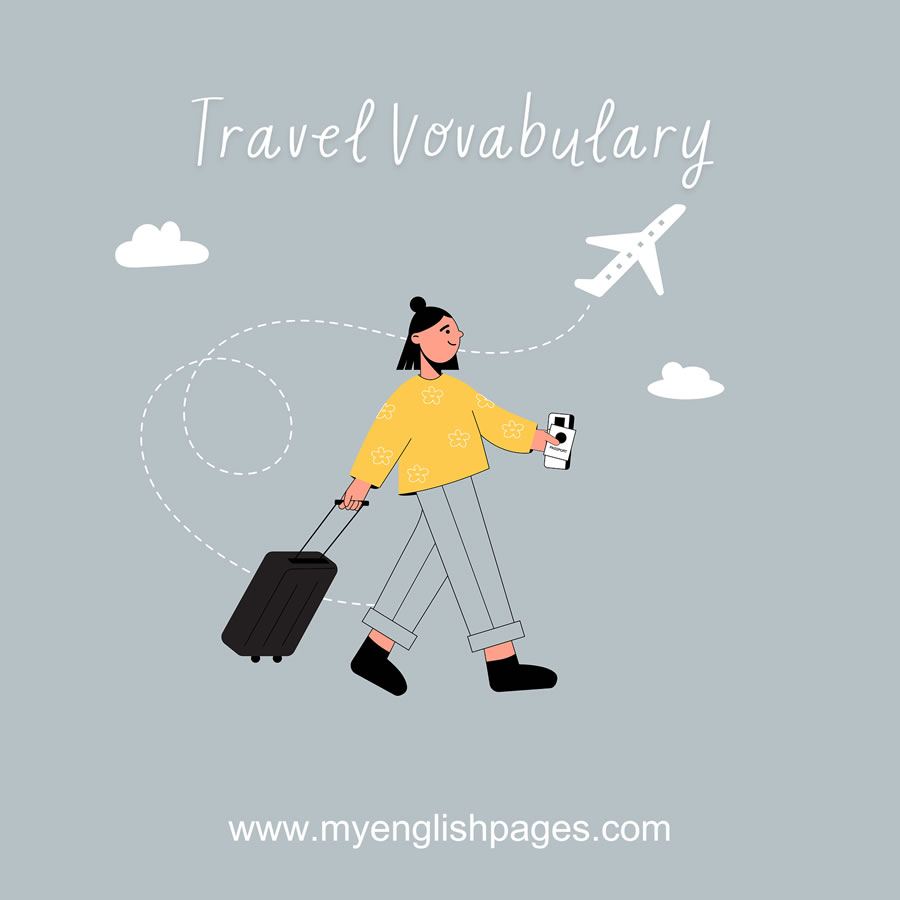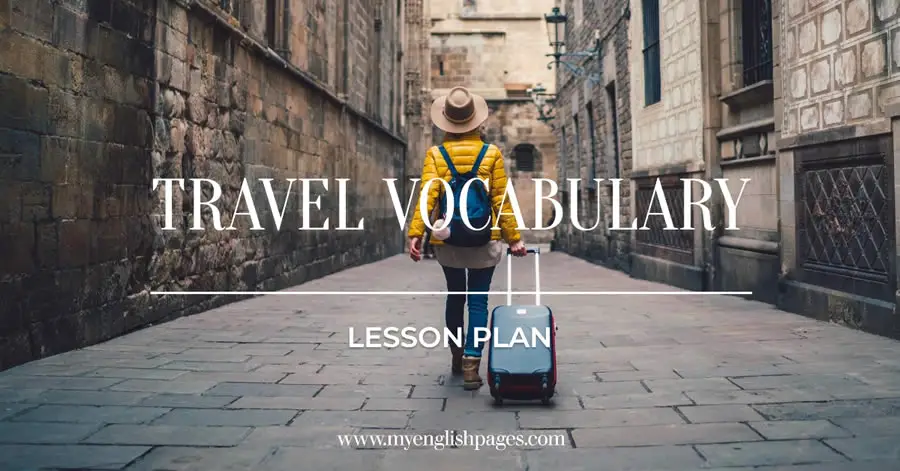Table of Contents
Introduction
This lesson plan introduces students to key travel vocabulary through interactive group work and a writing task. By the end of the lesson, students will feel more confident using travel-related terms and will be able to construct simple sentences and paragraphs involving travel scenarios.
Before exploring the travel vocabulary lesson plan, let’s first have a look at the lesson plan details!
Lesson Plan Details
Travel Vocabulary Lesson Plan
Level: Beginners
Objectives:
- To learn basic travel vocabulary
- To encourage learner cooperation
- To write a paragraph using travel-related vocabulary
Materials: Worksheets with matching tasks (provided below), optional visuals (flashcards or travel-related pictures)
Duration: 30-40 minutes
Travel Vocabulary Lesson Plan:

1. Travel Vocabulary Matching Exercise
A. Divide the students into small groups:
This fosters collaboration and encourages peer support during the activity.
B. Hand out the worksheet:
The worksheet contains a matching task to connect travel-related actions with the correct locations.
Worksheet: Travel Places Matching Task
Match the following travel actions with the correct places.
| Travel Action | Place |
|---|---|
| A. Buy tickets | 9. Ticket office |
| B. Get the train schedule | 1. Information desk |
| C. Make a phone call | 2. Pay phone |
| D. Check my luggage | 5. Baggage check |
| E. Eat something | 7. Snack bar |
| F. Wait for the train | 8. Waiting area |
| G. Buy a newspaper | 4. Newsstand |
| H. Catch the train | 6. Train station |
| I. Catch the plane | 3. Airport |
C. Work as a team:
Students work together to complete the matching task, discussing the terms and helping each other with unfamiliar vocabulary.
D. Present the answers:
After groups finish, have one representative from each group come to the board to write down their answers.
E. Discuss and compare answers:
Go over the answers as a class, discuss any differences, and ensure all students understand the correct responses.
F. New vocabulary is recorded:
Ask students to write the new words in their notebooks for future reference. You can also encourage them to add notes or draw visuals to help with retention.
2. Additional Activities
A. Listening Exercise: Airport Announcements
- Play a short audio recording (or read aloud) of typical airport or travel announcements, like boarding calls or safety instructions.
- Ask students to listen carefully and identify key travel-related words.
- Afterward, discuss the words they heard and what they mean.
B. Picture-Matching Task
- Materials: Print out or show images of airports, train stations, newsstands, and snack bars.
- Give students a set of vocabulary words and ask them to match the words to the correct images.
- This visual activity helps reinforce vocabulary learning through imagery.
Get a Picture Matching Activity in PDF Format
C. Role Play: At the Airport or Train Station
- Divide students into pairs or small groups and ask them to create short dialogues using the vocabulary from the lesson.
- Example situations: Checking in at the airport, buying tickets at the train station, or ordering food at a snack bar.
- Perform the role-plays in front of the class. This encourages speaking practice and builds confidence in using the new words.
D. Vocabulary Bingo
- Prepare Bingo cards with travel-related vocabulary instead of numbers. Call out definitions or sentences containing the words, and students mark their cards accordingly.
- This is a fun and engaging way to review the vocabulary.
E. Creative Writing Activity: My Perfect Trip
- After learning the travel vocabulary, ask students to imagine and write about their “perfect trip.”
- Provide sentence starters like “When I travel, I always…”, “I prefer to travel by…”, or “During my trip, I love to…”.
- Encourage them to use the new words they’ve learned in their writing. This helps solidify vocabulary through contextual usage.
3. Follow-Up Activity

Homework Task:
- Ask students to search for pictures related to travel (e.g., images of airports, train stations, or common travel items). They should bring these pictures to the next class to create a “Travel Vocabulary Wall” where they label the pictures with the new words they’ve learned.
Writing Task:
- Have students write a short paragraph about what they do when they travel. Provide a scaffolded paragraph for lower-level learners to fill in:
- When I travel, I pack up my __ and __. I take a taxi to the __. At the __, I check my luggage. Then, I __ a newspaper from the __. Finally, I catch my __ and __.
- Encourage more advanced learners to add details about their favorite travel experiences or imagined trips.
Conclusion
Learning travel vocabulary is essential for real-life communication, especially when planning trips or navigating transportation. This lesson allows students to work cooperatively, reinforce vocabulary through multiple activities, and apply their learning by writing paragraphs about their travel experiences.
Engaging in activities like role-play and matching games helps students internalize the vocabulary, making them more confident in using these terms in everyday contexts. By the end of the lesson, students will have gained practical knowledge that they can use during travel, all while enhancing their collaboration and writing skills.


